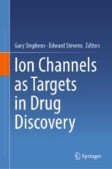Search
Search Results
-
The Broad Spectrum of Responses to Oxidative Stress in Proliferating Cells
Proliferating mammalian cells exhibit a broad spectrum of responses to oxidative stress, depending on the stress level encountered. Very low levels...
-
Low Molecular Weight Antioxidants
Low molecular weight antioxidants are an important part of the antioxidative defense mechanisms of cells and organisms. This chapter gives a short...
-
Environmental Oxidative Stress – Environmental Sources of ROS
Environmental factors are known sources for oxidative stress. In consequence of the numerous influences that define our environment, environmental...
-
Endogenous Oxidant-Generating Systems
Although organisms respiring air oxygen use their energy sources in an optimal way they are threatened by the compulsory formation of reactive oxygen...
-
Glutathione
Glutathione is the most abundant non-protein thiol in cells. It is a tripeptide with two important structural features: the thiol group and the...
-
Modulation of Cellular Signaling Processes by Reactive Oxygen Species
Exposure of cells to reactive oxygen species (ROS) may result not only in cell death by excessive oxidation of biomolecules but also cause the...
-
Diazo and Diazonium DNA Cleavage Agents: Studies on Model Systems and Natural Product Mechanisms of Action
Diazonium salts have been previously used to cleave DNA via generation of carbon centered radicals and cations. Efforts have been made in the...
-
Synthesis of Biologically Active Heterocyclic Stilbene and Chalcone Analogs of Combretastatin
Combretastatin A-4 (CA-4, 7) has had a major impact in the field of medicinal chemistry as a potent bioactive molecule that binds to the...
-
Overcoming Bacterial Resistance: Role of β-Lactamase Inhibitors
Resistance to modern antibiotics is currently a major health concern in treating infectious diseases. Abuse, overuse, and misuse of antibiotics in...
-
Synthesis of Carbolines Possessing Antitumor Activity
Synthetic approaches to a number of carboline derivatives having antitumor activity are described. Representative examples of molecules with...
-
Chemical Modifications of Biomolecules by Oxidants
There is strong evidence in support of the oxidation of biomolecules during normal physiology and under conditions of environmental or pathological...
-
Pyrrole Natural Products with Antitumor Properties
This review examines the antitumor activity and synthetic strategies for pyrrole-containing natural products possessing the oxygenated...
-
Novel Synthetic Antibacterial Agents
Classical (fermentation-based) and nonclassical (nonfermentation-based) antibacterials are conventionally used for the treatment of bacterial...
-
DNA Repair: Mechanisms and Measurements
The early findings that significant amounts of modifications are induced to the cellular DNA both spontaneously and as a consequence of metabolism...
-
Mitochondrial Free Radical Production, Antioxidant Defenses and Cell Signaling
Mitochondria were classically recognized as the organelles that produce the energy required to drive the endergonic processes of cell life, but now...
-
Protein Repair and Degradation
Protein oxidation is one of the important processes taking place during oxidative stress. Numerous amino acids can be modified within proteins...
-
Superoxide Dismutases and Catalase
Superoxide dismutases (SODs) and catalase represent the primary enzymatic defense against reactive oxygen species. Both enzymes are present in...
-
Vaccines
Vaccines are among the most successful health interventions against infectious diseases currently available. They prevent infectious diseases and are...
-
Immune Cell Ion Channels as Therapeutic Targets
The immune systemImmune systems and its components represent the body’s defensive apparatus against microbes, toxins, trauma, and neoplasms....
-
Ion Channel Tools and Therapeutics from Venoms and Toxins
For almost as long as the ion channels in our brains have powered conscious thought, we have been fascinated by venoms and toxins. Initially thought...
